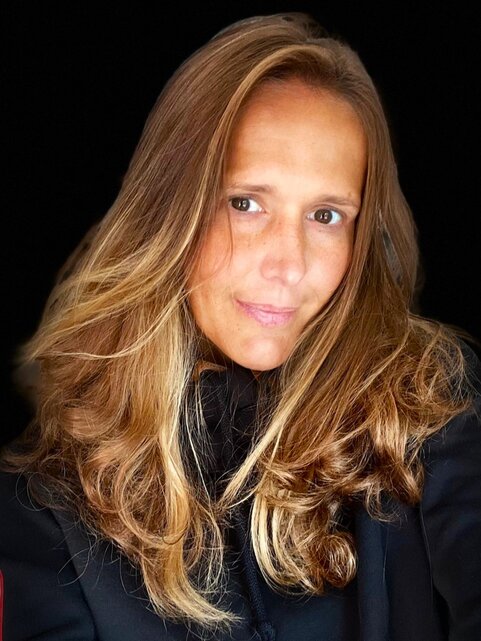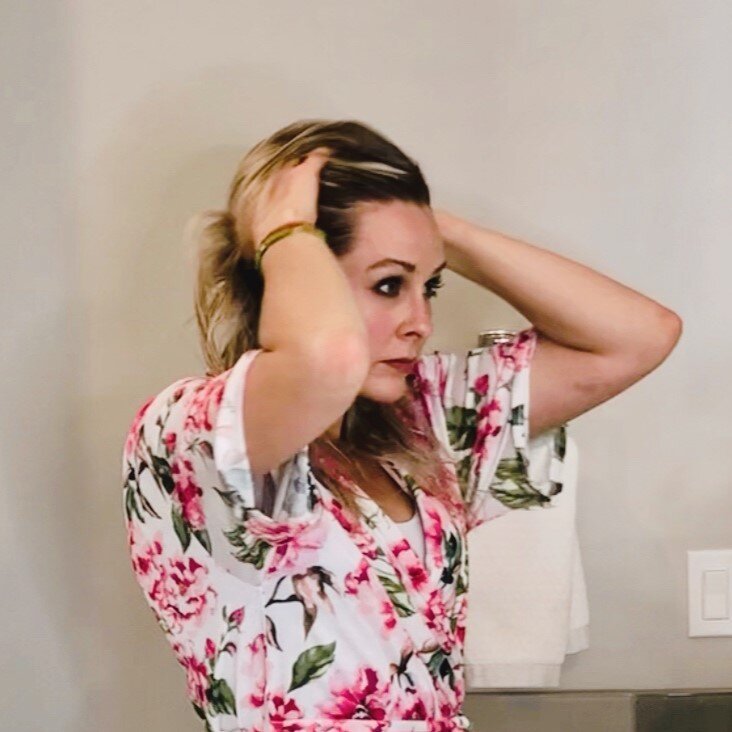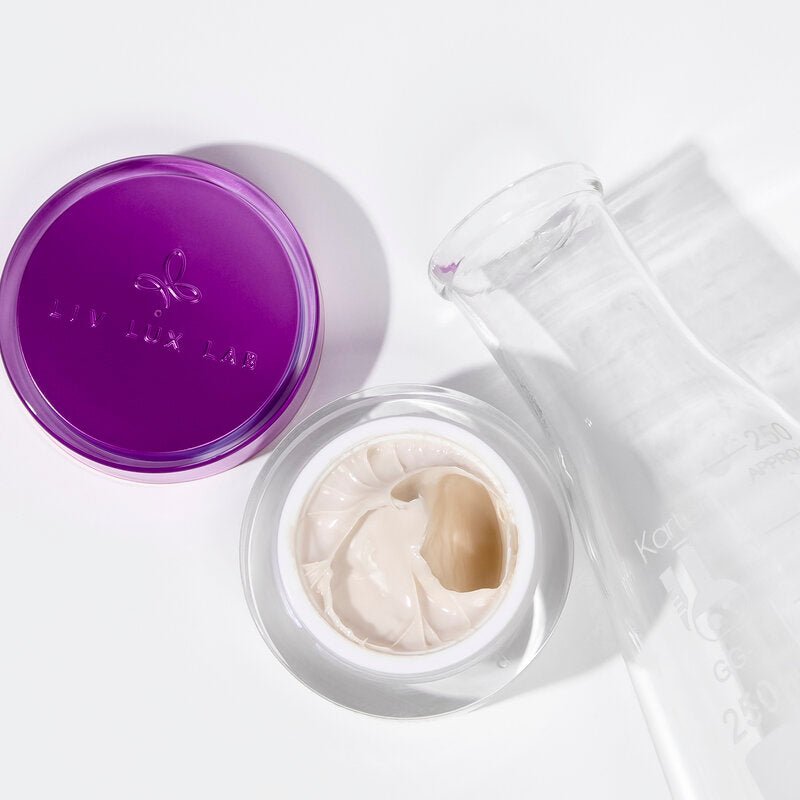“Clean beauty” is everywhere—but what does it really mean? While the term suggests safety and purity, many products labeled “clean” still contain ingredients that are restricted, under review, or even prohibited in other countries. Even well-meaning brands can miss hidden risks—especially when contract manufacturers revise formulas to cut costs.
As the founder of two clean beauty brands—HydroPeptide and Save Me From—I’ve spent over two decades formulating products that deliver clinical results without compromising safety. But even in today’s “clean beauty” era, many personal care products still contain ingredients that raise serious health and environmental concerns. At Save Me From, we believe clean should mean safe, transparent, and globally compliant.
U.S. lawmakers have introduced the Safer Beauty Bill Package, a federal legislative effort to restrict the use of certain chemicals in cosmetics. So let’s break down the ingredients you won’t find in our products—what these ingredients are, why they were historically used, why they’re now under scrutiny, and what safer alternatives exist—especially the ones we use at Save Me From.
📌 Important Note on Ingredient Regulation
Before we break down the individual ingredients, it’s worth clarifying these common misconceptions—because understanding what’s truly harmful (and what’s just misunderstood) is key to making informed choices.
⚠️ Restricted ≠ Prohibited
As we await the final proposed federal cosmetics bill, it’s important to understand that some ingredients may be:
- Restricted by concentration (e.g., allowed below a certain %)
- Restricted by product type (e.g., rinse-off vs. leave-on)
- Prohibited entirely in certain regions
Even “clean” brands can unknowingly include these ingredients—especially if they rely on contract manufacturers who revise formulas without full disclosure. Save Me From proactively formulates to meet or exceed the strictest global standards - so you don't have to guess.
⚠️ Guilty by Association ≠ Guilty by Chemistry
Some ingredients sound similar but behave very differently. Unfortunately, they’re often lumped together in consumer perception—or even regulatory scrutiny—because of name confusion. Here’s what that means in plain terms:
🧪 Example 1: Styrene vs. Styrene/Butadiene Copolymer
- Styrene is a volatile monomer linked to carcinogenicity and environmental toxicity.
- Styrene/Butadiene Copolymer, on the other hand, is a fully polymerized, stable material used in hair and skin products. It does not release styrene and is considered safe in its final form.
- Why it matters: Just because it contains “styrene” in the name doesn’t mean it behaves like styrene. We use this copolymer in Age Acceleration to create a breathable, hydrating film—without the risks associated with raw styrene.
🧪 Example 2: PEGs vs. Bis-Lauryl Cocaminopropylamine/HDI/PEG-100 Copolymer
- PEGs (polyethylene glycols) are often flagged for contamination with 1,4-dioxane, a potential carcinogen formed during ethoxylation.
- Bis-Lauryl Cocaminopropylamine/HDI/PEG-100 Copolymer is a large, stable molecule created by linking coconut-derived amino acids with PEG-100 and hexamethylene diisocyanate. It’s used as a viscosity controller and does not behave like traditional PEGs.
- Why it matters: This ingredient is structurally and functionally different from standalone PEGs. It’s not ethoxylated and doesn’t carry the same risks. We avoid ethoxylated PEGs entirely and vet every copolymer for safety, stability, and global compliance.
Other Commonly Confused Ingredients
|
Misunderstood Ingredient |
Often Mistaken For |
What It Actually Is |
Why It’s Safe |
|
Phenoxyethanol |
Formaldehyde |
A gentle preservative |
Not a formaldehyde releaser |
|
Cetearyl Alcohol |
Drying Alcohols |
Fatty alcohol |
Moisturizing, not irritating |
|
Sodium Cocoyl Isethionate |
Sulfates (e.g., SLS) |
Mild surfactant from coconut |
Sulfate-free, gentle cleanser |
|
Caprylyl Glycol |
Propylene Glycol |
Humectant and skin conditioner |
Not petroleum-derived |
Confusion around cosmetic safety often starts with the label but now that we’ve cleared up some of the most common misconceptions, let’s take a closer look at the ingredients that are raising red flags—and how Save Me From offers safer, smarter alternatives.
What Are These Potentially Restricted Ingredients?
Here’s a simplified breakdown of the most concerning ingredients flagged by regulators and researchers:
Formaldehyde & Methylene Glycol
- Why they were used: Preservatives and chemical hair straightening agents, especially in keratin treatments.
- Why they’re concerning: Known carcinogens that release toxic vapors when heated, posing risks to both consumers and salon professionals.
- Better preservation alternative: We use radish root ferment and gluconolactone—natural preservatives that are gentle yet effective.
Safe Smoothing Without the Risk
While Save Me From doesn’t use chemical straighteners, our formulas—especially Age Acceleration—support smoother, more manageable hair through a restorative approach:
- Fenugen™ (Fenugreek Seed Extract): Rich in amino acids and phytonutrients that strengthen the hair shaft, reduce frizz, and improve elasticity.
- Creatine: A bond-building molecule that reinforces internal hair structure, helping strands align more smoothly.
- Panax Ginseng Root Extract: Revitalizes follicles and supports scalp health, contributing to stronger, sleeker growth.
- Green Tea & Niacinamide Equivalents: In Pollution Assault, green tea extract offers antioxidant and antibacterial support. Across all formulas, Fenugen™ provides niacin, nicotinic acid, and niacinamide-like compounds that help regulate microbial balance and support barrier health.
Mercury Compounds
- Why they were used: Skin lightening and anti-aging creams.
- Why they’re concerning: Neurotoxic and banned in most countries.
- Better alternative: Our Age Acceleration uses Fenugen™, a proprietary fenugreek-based blend rich in phytonutrients that support collagen production and skin repair—without toxicity.

Isobutylparaben & Isopropylparaben
- Why they were used: Preservatives to prevent microbial growth.
- Why they’re concerning: Potential endocrine disruptors; banned in the EU.
- Better alternative: We use leuconostoc ferment filtrate, a probiotic-based preservative that supports skin health.
M-Phenylenediamine & O-Phenylenediamine
- Why they were used: Common ingredients in permanent hair dyes, especially darker shades.
- Why they’re concerning: Linked to skin sensitization, allergic reactions, and potential carcinogenicity—especially with repeated exposure.
What We Offer Instead
At Save Me From, we don’t formulate or sell hair dye products. Instead, we focus on restoring scalp and hair health after chemical treatments like coloring, bleaching, or relaxing—which often leave behind irritation, dryness, and breakage.
- For scalp sensitivity and buildup, Product Overload gently detoxifies without harsh surfactants or synthetic dyes.
- For chemical damage and breakage, Chemical Conflict helps rebuild compromised hair fibers with bond-reinforcing ingredients like creatine and fenugreek.

Lilial (Butylphenyl Methylpropional)
- Why it was used: Synthetic floral fragrance.
- Why it’s concerning: Banned in the EU for reproductive toxicity.
- Better alternative: We use natural essential oils and bio-identical aroma molecules that are IFRA-compliant and safe.
Styrene vs. Styrene/Butadiene Copolymer
- Styrene: Used as a solvent to help dissolve other substances without breaking them down and to enhance the aroma of certain fragrances but concerning due to being a volatile compound linked to cancer.
- Styrene/Butadiene Copolymer: A stable polymer used in hair and skin products.
- Why it’s different: In our Age Acceleration, the copolymer is fully polymerized, meaning it doesn’t pose the same risks as raw styrene. It helps create a breathable film that locks in hydration without irritation or systemic exposure.
Toluene
- Why it was used: Nail polish and hair dyes.
- Why it’s concerning: Neurotoxic and linked to reproductive harm.
- Better alternative: We avoid all volatile solvents and use plant-based emollients that nourish instead of harm.
Triclosan & Triclocarban
- Why they were used: Antibacterial agents commonly found in soaps, toothpaste, and deodorants.
- Why they’re concerning: Linked to hormone disruption, antibiotic resistance, and environmental toxicity.
🧴 What We Offer Instead
At Save Me From, we take a holistic approach to scalp and skin health—supporting the microbiome and barrier function without harsh antibacterial chemicals.
- Our proprietary Fenugen™ blend, featured in every formula, is rich in fenugreek, a natural source of niacin, nicotinic acid, and niacinamide-like compounds.
- For targeted antioxidant and antibacterial support, Pollution Assault includes Camellia Sinensis (green tea) extract, which has been shown to inhibit bacterial growth and soothe irritated scalps.
Cyclotetrasiloxane (D4)
- Why it was used: A volatile silicone used to give hair and skin a silky, smooth feel.
- Why it’s concerning: Bioaccumulative and suspected endocrine disruptor.
- Our alternative: We use plant-based emollients like coconut alkanes.
Acetaldehyde
- Why it was used: Solvent and fragrance ingredient.
- Why it’s concerning: Probable human carcinogen (IARC).
- Our alternative: We use natural aroma compounds that are IFRA-compliant and sustainably sourced.
Vinyl Acetate
- Why it was used: Film-forming agent in styling products.
- Why it’s concerning: Listed under California Prop 65 as a carcinogen.
- Our alternative: In Pollution Assault, we use biodegradable polymers.
1,4 Dioxane
- Why it’s present: Contaminant in ethoxylated ingredients like PEGs and sulfates.
- Why it’s concerning: Likely carcinogen; difficult to remove from water systems.
- Our alternative: We avoid ethoxylated surfactants entirely and use coconut-derived cleansers.
Lead and Lead Compounds
- Why they were used: Found in older lipsticks and kohl eyeliner.
- Why it’s concerning: Neurotoxin; linked to lead poisoning.
- Our alternative: We use iron oxides and mica, rigorously tested for purity.
💡 What Is Kohl Eyeliner?
Kohl eyeliner is a richly pigmented, smudgeable eye cosmetic with ancient origins. Traditionally made from minerals like galena or stibnite, it was used not only for beauty but also for spiritual and medicinal purposes. While modern kohl formulas are typically safe and lead-free, older versions have been linked to lead exposure—especially in imported or homemade products.At Save Me From, we steer clear of all heavy metals and opt for clean, globally compliant pigments that deliver performance without risk.

💡 Why Save Me From Is the Smarter Choice
Many popular scalp serums contain cyclotetrasiloxane, parabens, and synthetic fragrance—all flagged for potential health risks. At a similar price point, our Save Me From Age Acceleration offers:
- 🌿 Fenugen™ (Fenugreek extract): A rich source of amino acids, niacin, and antioxidants that support scalp and skin health.
- 🧬 Creatine and Panax Ginseng: Strengthen hair fibers and improve resilience.
- 💧 Coconut alkanes and biodegradable polymers: Deliver silky texture and environmental protection without toxicity.
- 🌸 Natural fragrance and aroma compounds: Safe, IFRA-compliant, and soothing for sensitive scalps.
🔍 Final Thoughts: Clean Beauty Isn’t Just a Trend—It’s a Responsibility
Clean beauty shouldn't be a marketing term - it should be a standard - and it's more than just about what’s left out—it’s about what’s put in. At Save Me From, we formulate with:
- Globally compliant ingredients
- Clinical validation
- Transparency at every step
As a mom, a formulator, and a clean beauty advocate, I believe transparency and safety should never be optional. At Save Me From, we don’t just follow regulations—we lead with innovation, integrity, and clinical validation.
Explore our full collection of scalp and skin wellness solutions and read more on our blog where we dive deeper into ingredient safety, formulation science.
"Dirty" Beauty Glossary
The "Dirty" Ingredients Wellness Brands Shouldn’t Overlook
At Save Me From, we don’t just follow clean beauty trends—we set the standard. Our formulas are clinically validated, globally compliant, and free from ingredients that compromise your health or the planet. Here’s a breakdown of the ingredients we avoid, why they’ve been used historically, what makes them concerning, and what we use instead.
|
Ingredient |
Status |
Why It Was Used |
Why It’s Concerning |
What We Use Instead |
|
Formaldehyde, releasers & donors |
Banned in EU |
Preservatives in hair and nail products used to extend shelf life |
Release formaldehyde over time (known carcinogen and skin sensitizer) |
Non-toxic preservation systems such as Radish Root Ferment + natural antimicrobials |
|
PEGs (Polyethylene Glycols) |
Under review |
Emulsifiers and thickeners |
Often contaminated with 1,4 dioxane (carcinogen) |
Non-ethoxylated emulsifiers like cetearyl alcohol and lecithin |
|
M-Phenylenediamine & O-Phenylenediamine |
|
Common ingredients in hair dyes |
Linked to skin sensitization, allergic reactions and potential carcinogenicity |
We don't sell hair dyes but focus on hair + scalp restoration |
|
Toulene |
Restricted |
Used in nail polish and hair dyes |
Neurotoxic and linked to reproductive harm |
Avoiding volatile solvents and using plant-based emollients |
|
Lilial |
Banned in EU |
Synthetic floral fragrance |
Reproductive toxicity |
Natual essential oils + bio-identical aroma molecules |
|
Parabens |
Isobutylparaben banned in EU |
Preservatives to prevent microbial growth |
Linked to hormone disruption and found in breast tissue; banned in EU for children’s products |
Natural preservatives like leuconostoc ferment filtrate |
|
Phthalates |
Banned in EU cosmetics |
Used to make fragrances last longer |
Endocrine distruptor associated with reproductive toxicity |
IFRA-compliant natural aroma compounds |
|
Triclosan & Triclocarban |
Triclosan banned in EU |
Antibacterial agent |
Linked to thyroid disruption and antibiotic resistance |
Green tea extract + Fenugreek (source of niacinamide) |
|
Cyclotetrasiloxane (D4) |
|
Silicone for silky texture |
Bioaccumulative; endocrine disruptor |
Coconut alkanes |
|
Acetaldehyde |
|
Solvent and fragrance ingredient |
Probable carcinogen (IARC) |
Natural aroma compounds |
|
Vinyl Acetate |
CA Prop 65 carcinogen |
Film-forming agent in styling products |
Toxic fumes |
Biodegradable polymers |
|
1,4 Dioxane |
|
Contaminant in ethoxylated ingredients |
Likely carcinogen; hard to remove from water systems |
No ethoxylated surfactants |
|
Lead & Lead Compounds |
|
Found in older lipsticks and kohl eyeliner |
Neurotoxin; linked to lead poisoning |
Iron oxides + mica (tested for purity) |
|
Sulfates (SLS/SLES) |
|
Foaming agents in cleansers |
Can strip natural oils; cause irritation; often contaminated with 1,4 dioxane |
Coconut-derived surfactants that cleanse gently |
|
Mercury Compounds |
Banned Globally |
Skin lightening and anti-aging creams |
Neurotoxic and banned in many countries |
Phytonutrients (found in Fenugreek), help support collagen and skin repair |
|
Styrene |
Restricted |
Solvent and fragrance ingredient |
Carninogenic monomer |
Styrene/Butadiene Copolymer (safe) |
Frequently Asked Questions
What does “clean beauty” really mean?
Clean beauty refers to products formulated without ingredients known or suspected to harm human health or the environment. At Save Me From, it also means transparency, global compliance, and clinical efficacy.
Are all “clean” beauty products safe?
Not necessarily. Many “clean” products still contain ingredients that are restricted or banned in other countries. Always check for full ingredient transparency and global compliance.
What are some banned ingredients in cosmetics?
Commonly banned or restricted ingredients include formaldehyde, mercury compounds, isobutylparaben, triclosan, and toluene. These are flagged for carcinogenicity, endocrine disruption, or environmental toxicity.
What’s the difference between restricted and prohibited ingredients?
Restricted ingredients may be allowed in small concentrations or specific product types. Prohibited ingredients are banned outright in certain regions due to safety concerns.
What are safer alternatives to formaldehyde in hair products?
Save Me From uses radish root ferment and gluconolactone—natural preservatives that are effective without releasing toxic vapors.
Why are PEGs controversial in clean beauty?
PEGs can be contaminated with 1,4-dioxane, a potential carcinogen. Save Me From avoids ethoxylated PEGs and uses safer copolymers vetted for stability and compliance.
Citations
- Cosmetic Ingredient Review Expert Panel. “Safety Assessment of Formaldehyde and Methylene Glycol.” International Journal of Toxicology, vol. 30, no. 2, 2011.
- WebMD. “Harmful Chemicals in Your Cosmetics.” Accessed July 2025.
- FDA. “Lead in Cosmetics.” U.S. Food and Drug Administration, 2024.
- European Commission. “Lilial (BMHCA) Classification and Ban.” Scientific Committee on Consumer Safety, 2022.
- ATSDR. “Toxicological Profile for Toluene.” Agency for Toxic Substances and Disease Registry, 2023.
- California DTSC. “1,4-Dioxane in Personal Care Products.” Safer Consumer Products Program, 202







